Ovate Pontic: Natural Look
Dr. Eloy Burga Noriega
Active Member of the American Academy of Cosmetic Dentistry Nº 001568
“If you can’t describe what you are doing as a process, you don’t know what you’re doing”.
W. Edward Deming
Summary: This article describes a technique utilized by expert cosmetic dentists in order to avoid alveolar collapse. The goal is to create a final restoration that makes the impression of a tooth emerging from the gum.
Introduction
The ovate pontic is a technique used to create the illusion that the tooth is growing out of the gum. The ovate pontic can also help to create or maintain the presence of interdental papilla, plus an ovate pontic contour is an effective design for cleansibility. Unfortunately, an ovate pontic design is not usually utilized by clinicians, but cosmetic dentist specialists are required to master this technique.
One of the most challenging issues in a dental treatment plan is to preserve interproximal tissue after the removal of a tooth. To avoid alveolar bone collapse is highly desirable in restorative dentistry.
It is important to preserve the socket size, shape, and the space of the gingival tissue in order to preserve the tissue height.
When a tooth is extracted the recession of the interproximal papilla and the collapse of the buccal bone must be prevented and this means that the extracted socket must be preserved in the same shape and location.
It is highly important to preserve the papilla during the extraction procedure and to fill the extraction site with the provisional pontic as soon as possible.
The form of the teeth is not the only important matter to take into account for a nice outcome, the control of the gingival contours is just as important. The ovate pontic eliminates “black triangle” spaces.
History
This patient was a 30-year-old healthy female who complained about the cross-bite relationship of tooth 7. The patient did not want to go through orthodontic treatment and refused implants. She was looking for a quick way to correct the appearance of her tooth. (Figures 1 and 2).
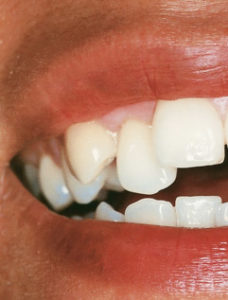
Figure 1: Pretreatment, right lateral view
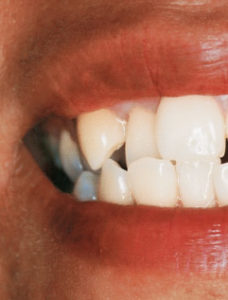
Figure 2: Pretreatment, cross-bite upper right lateral incisor.
Technique
Before starting the treatment plan, alginate impressions were taken to fabricate study models. The study models were sent to the laboratory for fabrication of the temporary bridge. A diagnostic wax-up was made. Pictures were taken. Teeth 6 and 8 were prepared for bridge abutments and periapical radiographs.
A critical factor is the extraction of the tooth. The tooth was extracted atraumatically, taking great care not to fracture the labial plate bone. A delicate tooth extraction is crucial for bone preservation (Figure 3). The tissue level was evaluated finding that hard and soft tissue heights were in acceptable levels. Bone grafting and connective tissue build-up was unnecessary.

Fig. 3:Atraumatic extraction of tooth 7.
Socket site is intact
Temporary bridge resin was added to the underside of the pontic, the bridge was reseated so that the resin flows into the socket and the bridge was relined. The bridge was removed and the pontic shape highly polished. Then it was cemented into place with cement NE. (Figures 4a, 4b and 4c).
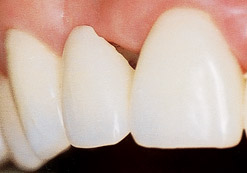
Figure 4a: Temporary bridge
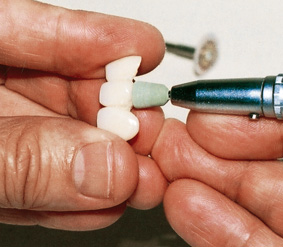
Figure 4b: Sculpting the ovate pontic
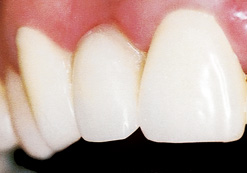
Figure 4c: The temporary bridge is shown cemented
in place after extraction and site preparation.

Figure 6a: Before gingivoplasty
The provisional pontic was constructed so that the “egg” portion is submerged into the extraction site about 2 to 3 mm . (Figure 5).
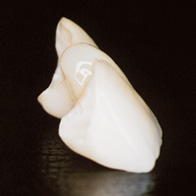
Figure 5: Notice the high polished “egg” portion
The patient was instructed to return in 48 hours for removal of the temporary and evaluation of the extraction socket for proper healing. After evaluation the temporary was recemented.
After two weeks the socket was revaluated and the gingival contour was sculpted with electrosurge. (Figures 6a and 6b)

Figure 6a: Before gingivoplasty
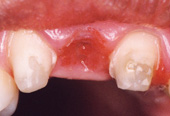
Figure 6b: After remodelling
A series of temporary bridges was necessary to manipulate the soft tissues to recreate ovate pontic receptor sites and natural-looking interdental papillae.
After six weeks a slight inflammatory reaction was observed in the soft tissues (Figure 7).
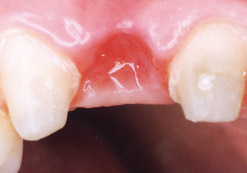
Figure 7: The delayed condition is seen to have caused a slight
inflamatory reaction in the soft tissues
With each new temporary bridge aesthetics were improved and the soft tissues compressed to help form papillae. (Figure 8)
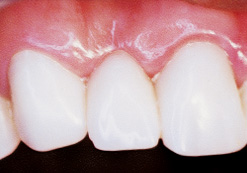
Figure 8: The tissue has adapted to the temporary ovate pontic.
Maturation of the pontic site
Approximately four months after extraction and four provisional bridges later the soft tissues had neared maturation. A further increase in the buccal contraction was seen, giving a significant increase in the tooth length while the papillae closed the interproximal spaces almost completely.
Once the final work was in situ we can appreciate that the scalloped gingival architecture was preserved and harmony is satisfactory (Figure 9)

Figure 9: The soft tissues have changed dramatically, showing well-rounded ovate pontic receptor sites and papillae formation
Final impression and cementation
The final impression may be taken three to four months after extraction, due to the variability in the healing process for each patient.
In this case the final impression for the final restoration was taken four months after the extraction.
A dual-cure resin cement was selected. The cementation of the metal-free bridge was based on manufacturing recommendations (Figures 10a and 10b)
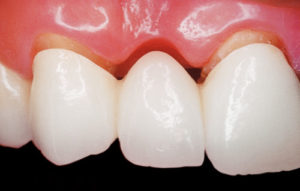

Figure 10b: The all-ceramic restaurations are shown bounded in place. The scalloped gingival architecture, although more apicalized, appeared to be preserved and demonstrated satisfactory harmony.
The patient was instructed to clean this specific area with super floss, so as to prevent any possible inflammatory reaction. Also, the use of a waterpik system using low pressure, aiming the water stream at the teeth at a 90-degree angle, not at the gum tissue. The convex shape of the pontic allows proper cleansing of the edentulous area.
Conclusion
The main objective in this case was achieved; the patient was very pleased. The final restoration exhibits excellent form and function, the restoration appears integrated with the soft tissue and the aesthetic outcome was exciting. All of this was possible because and adequate ridge contour was retained. (Figures 11a and 11b).
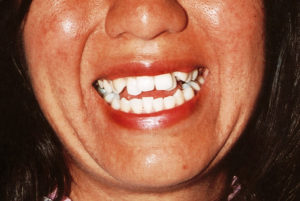
Figure 11a: Pretreatment
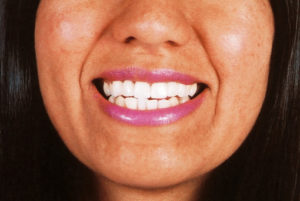
Figure 11b: Post-treatment
References
- Spears, F. Maintenance interdental papilla following anterior tooth removal. Aesthetic dentistry 1999.
- Wohrle, PS. Single – tooth replacement in the aesthetic zone with immediate provisionalization: fourteen consecutive care reports. 1998
- Rufenacht, CR. Ridge pontic relationship fundamentals of Aesthetics.
- Hornbrook, DS. Maximizing aesthetics an function.
When fabricating provisional restorations. 1995 - Spoor, Rhys. Gingival sculpting. 2001
- Peter, Nordland. Dental Practice Report. 2004
- Miller, MB. Ovate Pontics: The natural tooth replacement. 1996
- Dylina, TJ. Contour determination for ovate pontics.
J Prosthetic Dent 1999 - Robert, A. Lowe. Ovate Pontic design: Maximizing aesthetics function of fixed partial bridges. Dental Products Report 2004
- Mauro, Fradeani. Aesthetic rehabilitation in fixed Prosthodontics. Gingival margin buntline. Post extraction approach. 2004
Este artículo es propiedad intelectual del Dr. Eloy Burga Noriega y menciona procedimientos que se realizaron en Cosmética Dental Burga.
Se autoriza su reproducción total o parcial, con la debida mención de su fuente.
The author declares no financial interest in any company manufacturing the types of products mentioned in this article.
